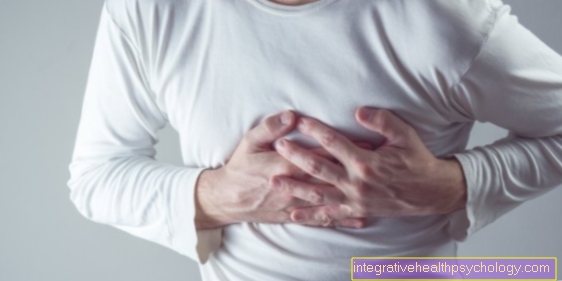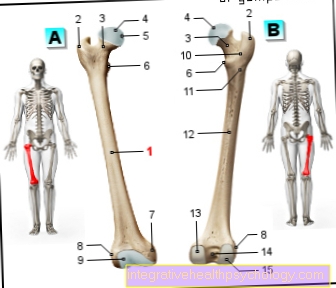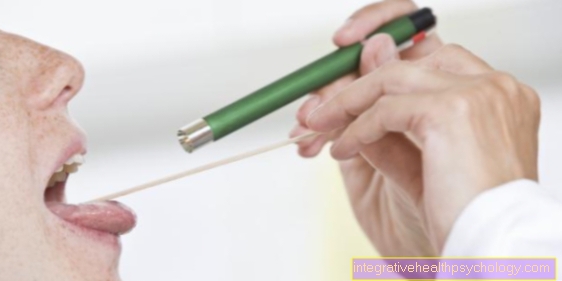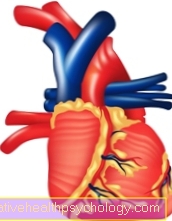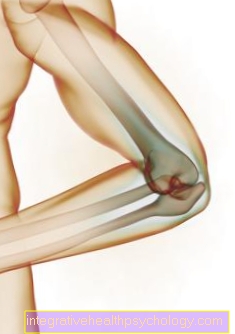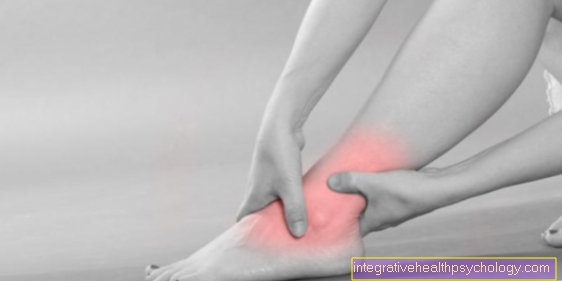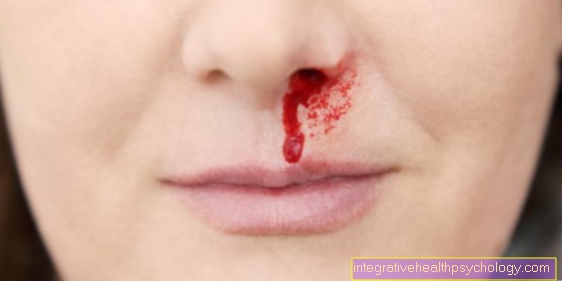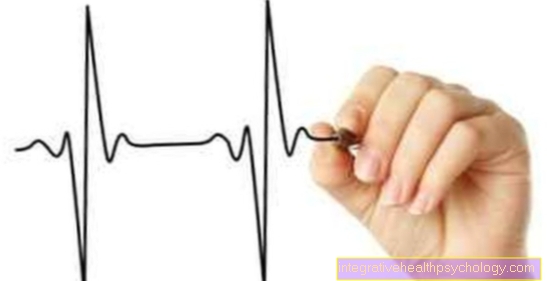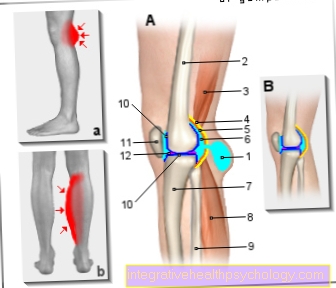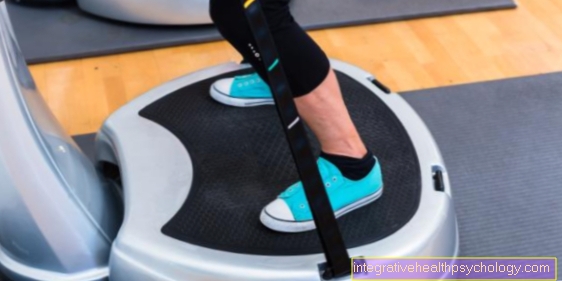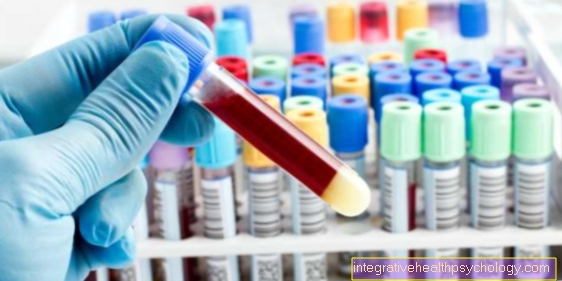ECMO
definition
"ECMO" stands for extracorporeal membrane oxygenation and is a cardiological and intensive medical procedure to relieve or replace the lung and, if necessary, heart function. The reason for using an ECMO is serious lung dysfunction, such as ARDS (acute respiratory distress syndrome) in adults or the respiratory distress syndrome in newborns. With ECMO, the blood is drained from a vein (oxygen-poor blood vessel), transported via a hose system into a device, where it is filtered through a kind of membrane, enriched and then added back to the human circulation via another hose system.
share via whatsapp
Indications for an ECMO
The causes for the use of extracorporeal membrane oxygenation are all diseases or changes that restrict the function of the lungs to such an extent that there is no longer sufficient gas exchange and thus there is a risk of an insufficient supply of oxygen to the body (hypoxia).
The most common indication for an ECMO is the so-called ARDS (acute respiratory distress syndrome). The ARDS can be triggered by a wide variety of factors, such as blood poisoning, shock, burns or injuries and manifests itself as a kind of inflammatory reaction within the lung tissue. Edema forms (water retention) and this leads to restricted gas exchange.
Other common causes for the use of an ECMO are resuscitation, lung transplants, hypothermia or severe pneumonia.
An ECMO is also often used in newborns. The respiratory distress syndrome of the newborn (IRDS), meconium aspiration (penetration of stool into the lungs) and blood poisoning play a role here. In contrast to adults, significantly higher survival rates (approx. 80%) are achieved in newborns.
To use the ECMO, those affected are placed in an artificial coma. Read our article on this: Artificial coma for pneumonia
How does the therapy with ECMO work?
If the indication for an ECMO has been made, it is connected to the human circulation via two cannulas and a hose system. For this purpose, different access routes are used depending on the indication.
A venous-venous system (VV-ECMO) is used for pulmonary dysfunction without impairing cardiac output. This means that both cannulas are inserted into one vein. These are usually the great inguinal vein and the deep jugular vein. The blood is transported through a tube into the actual device via the inguinal vein and added back to the circulation in another tube via the jugular vein.
Roughly speaking, the ECMO consists of a hose and cannula system, a blood pump, an oxygenator (membrane), gas connections (O2, CO2) and a heat exchanger. The blood supplied is enriched with oxygen (O2) and the carbon dioxide (CO2) accumulating in the body is filtered out. This process takes place on a kind of membrane and is called "oxygenation". In addition, the blood is warmed to body temperature in order to avoid hypothermia. Since the artificial surfaces can stimulate blood coagulation, the blood-thinning drug "heparin" is added as part of the ECMO.
The ECMO is also popularly known as the heart-lung machine. However, these are two different devices and should not be confused. A heart-lung machine is mostly used in cardiac surgery to bypass the heart during the operation and to achieve optimal operating conditions there.
What is a VA ECMO?
With VA-ECMO, in contrast to the typical ECMO discussed above, the filtered blood is not added to the human bloodstream via a vein, but via an artery. The inguinal artery located next to the large inguinal vein is usually used for this purpose. The two cannulas are therefore right next to each other. In contrast to the VV-ECMO, the heart is bypassed, which relieves it.
Accordingly, the VA-ECMO is mainly used for combined lung and heart diseases. The pumping power actually performed by the heart is taken over by the device, so that the heart's oxygen consumption is reduced and the heart is spared. Frequent indications are pulmonary dysfunction, which occurs in combination with or in connection with heart failure. The VA-ECMO is also particularly suitable for resuscitation, as the hoses are attached to the groin and the upper body remains outside and the resuscitation does not have to be interrupted.
Cannula
In the most common type of cannula system in the context of extracorporeal membrane oxygenation, the large inguinal vein (vena femoralis) is used as the drainage vessel and the deep jugular vein (vena jugularis interna) is used as the inflow vessel. When installing the ECMO, the respective wire is first pierced with a larger needle. If the vessel has been hit, a thin wire is inserted and pushed forward sufficiently.After any expansion of the skin that may be necessary, a tube is pushed along the wire into the vessel and then sewn and attached to the skin. In the case of the deep jugular vein, this tube usually extends into the right atrium of the heart.
In addition to the venous-venous ECMO system, there are also venous-arterial (VA) and the somewhat rarer arterial-venous (AV) extracorporeal membrane oxygenation. In the context of resuscitation, the placement of cannulas in the periphery (area remote from the body), for example on the groin, has proven itself, since this does not interrupt or hinder resuscitation.
Care at the ECMO
The extracorporeal membrane oxygenation represents a very high burden and a great effort for the nursing staff even in intensive medical conditions. On the one hand, the device must be checked very regularly and thoroughly. The connection via tubes to the patient and the puncture site must also be checked in order to detect or prevent infections at an early stage. The greatest challenge is the positioning and mobilization of the patient. Movements are avoided if possible in order to prevent the cannulas from slipping out. However, a certain amount of storage must still take place in order to be able to freshen up the bed and to prevent pressure points on the skin as part of pressure ulcer prophylaxis. A lot of nursing staff is required for such storage so as not to endanger the hose system. Another aspect is that with a patient connected to the ECMO, very regular blood checks (blood gas analyzes) have to be carried out in order to test them for the oxygen content and other parameters. Overall, the ECMO requires a lot of and above all trained nursing staff in order to ensure optimal use and thus also makes financial demands.
How long do you do an ECMO?
The duration of treatment with an ECMO varies and depends primarily on the patient's state of health. It ranges from several days to a few weeks. The maximum duration of treatment for extracorporeal membrane oxygenation is prescribed by the device and is therefore limited. The ECMO is often used to bridge critical health conditions and removed as soon as possible. As a rule, this involves switching to classic intensive care ventilation via a ventilator and tube (ventilation hose).
Unfortunately, there are always complications that require premature termination of therapy and complicate and lengthen the hospital stay. Frequently occurring problems are primarily coagulation disorders in the form of bleeding, which are caused by the simultaneous administration of the blood thinner heparin. On the contrary, too little administration can lead to the formation of a blood clot within the device, which is carried into the human circulation and can lead to an embolism there. Infections, for example at the puncture site, are also a common complication and can lead to blood poisoning without being recognized.
What is the survival rate for an ECMO?
The survival rate with ECMO depends mainly on the severity of the underlying disease and the age of the patient. The use of an ECMO in newborns, which is also very common, achieves survival rates of up to 80%. In adults this is significantly lower and is estimated at 40-50%. However, this is only the mean value for the patient concerned and can vary greatly depending on the situation at hand. A young patient, for example, will have a significantly higher chance of survival because he or she can cope better with the great physical strain and possible infections, can cope better with them and recovers more quickly. The indication also plays an extremely important role in assessing the survival rate. However, this is difficult to illustrate in general and should be clarified by a doctor in the specific case. Studies have shown that the presence of certain pre-existing conditions, such as heart failure, diabetes or a past heart attack, has a significant influence on the outcome of an ECMO and the subsequent recovery.
What are the costs for an ECMO?
The costs for treatment with an ECMO are enormous. However, the exact number is difficult to estimate because many different factors are taken into account and it depends heavily on the length of treatment. If acquisition costs, maintenance fees, personnel costs, individual material costs and others are added together, amounts of several thousand euros per patient arise. The device itself costs around 50,000 euros, but has a long service life. The problem is that the indications for extracorporeal membrane oxygenation are rare, which makes it difficult to pay off the device.





